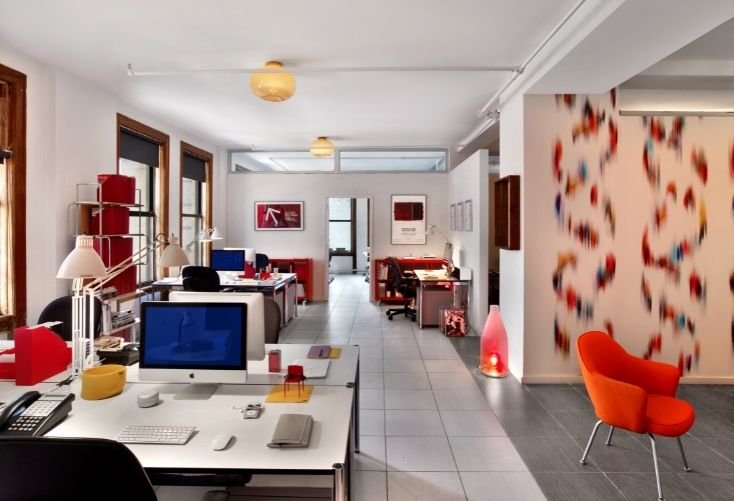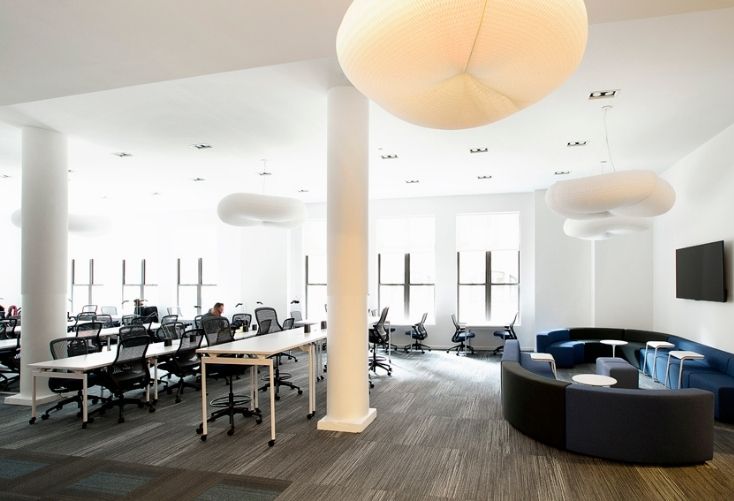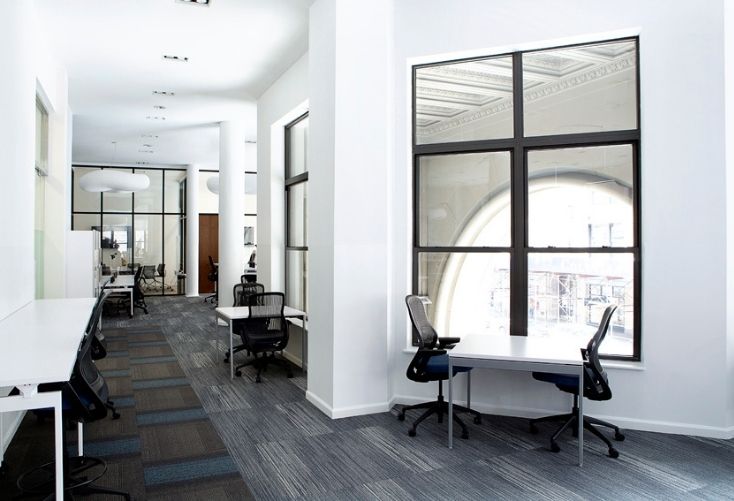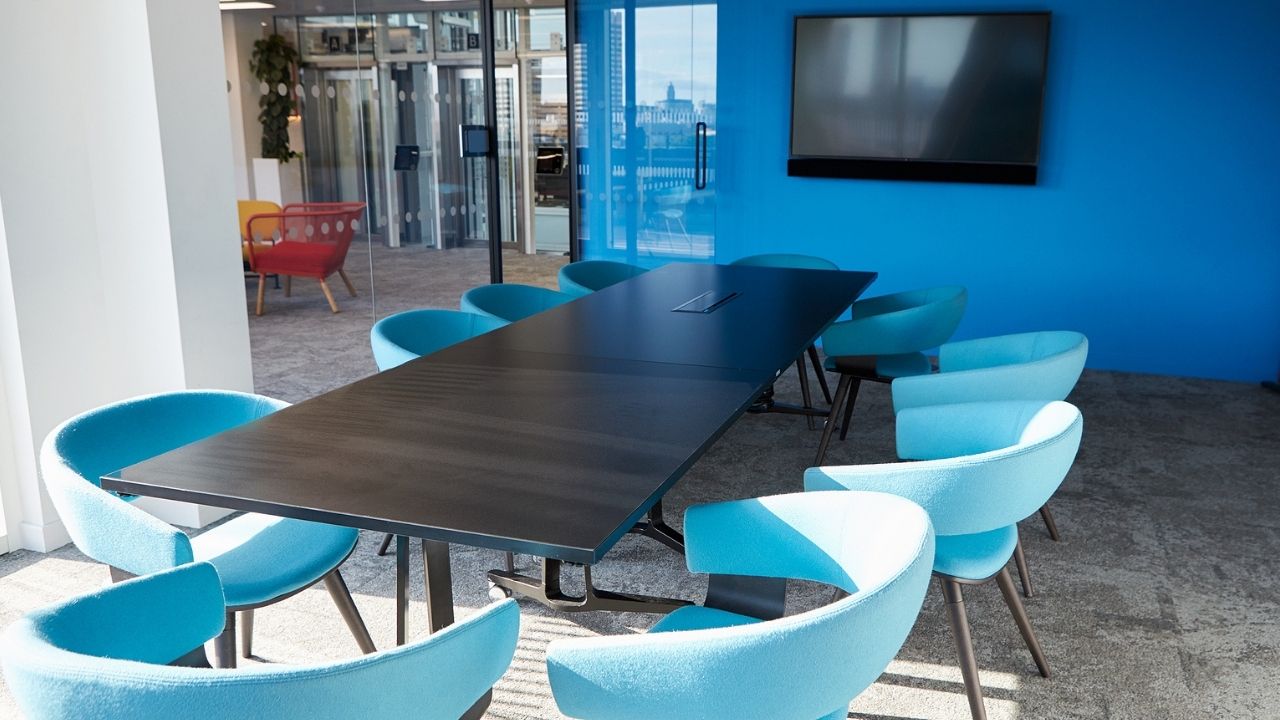- Neuro-architecture explores how art, color, lighting, and design can have a positive impact on our mood, productivity, and overall health.
- Our physiological state has a huge impact on our health, so the spaces that we spend our time in should be healthy for our mental wellbeing.
- Interior Design Director Jessica Shaw shares her top 10 tips for creating a workspace that boosts mental and physical wellness.
The theory of neuro-architecture explores how art, color, lighting, and design can have a positive impact on our mood, productivity, and overall health.
Part of our brains are tuned into the geometry of spaces and how they are organized. Whenever we enter a home, workplace, room, or any other environment, our brains are busy navigating the area to see how we will react to it.
Our physiological state has a huge impact on our health, so the spaces that we spend our time in should be healthy for our mental well-being.
Interior Design Director Jessica Shaw gave her top 10 tips for creating a workspace that boosts mental and physical wellness:
- Color: Studies have shown that color has the potential to affect your mood, emotions, concentration, and even physical health with methods like color therapy.
- Bolder colors like bright yellow boost positive thoughts and spark creativity, while reds stimulate and energize.
- Muted colors like soft greens and blues produce a sense of calmness which are ideal for lounge spaces or break areas.
- Integrating principles of color psychology into the workspace subconsciously enhances desired mindsets.
- Good vibes: Having a basic understanding of vibration between colors and how they interact is important when creating the composition of a room.
- Choose analogous colors for a harmonious, monochromatic look, or complementary colors for a bold, balanced look, and triadic colors for a more energetic, personality-filled space.
- Different hues, tints, tones, and shades can be used to create illusions or to draw attention to certain areas or things.

- Break color rules: Sometimes unexpected color combinations work well.
- Consider your personal brand or the company culture and gauge whether the color scheme within the office is representative of the vibe you are looking to create. Let the reaction influence your creative design palette.
- White as an accent color: Incorporate white more sparingly in furnishings and accent pieces.
- Studies have shown that too much white can actually stagnate productivity and creativity.
- If you are looking to make your workplace feel warm and inviting, use white sparingly because the color is often associated with hospitals and sterility.
- Stimulate creativity with abstract art: Art greatly influences people’s moods and the feel of an environment.
- Viewing art has been proven to have a powerful impact on the brain, stimulating the creation of new neural pathways, ways of thinking, brain activity, and function. Abstract art, specifically, has been noted to engage multiple areas of the brain, which can be good for innovation.

- Natural light: Let the sunshine in and reset your circadian rhythm.
- When designing the layout of a workspace, take into account sunlight. Poor lighting has been linked to negative decision-making.
- Brighter work environments with natural lighting not only helps with productivity levels, but also improves sleep quality.
- Benefits of natural light include reduced eye strain, drowsiness, headaches, and elevated moods.
- When working from home, the same principles apply. Move your desk near a window or room that has ample natural light to gain the same benefits.

- Create harmony in your space: In your surrounding environment, take into account the finishes, forms, and colors of the room.
- Having interior elements that are too similar can dull our senses; our visual field requires variety for stimulation.
- Bringing together pieces that juxtapose one another in color, form, or aesthetic livens up a space and prevents it from becoming stagnant.
- Get grounded: Flooring enhances the visual stability of a room and also acts as subtle visual cues for wayfinding.
- Carpeting provides a softer feel to a space while hardwood floors create a strong, polished look.
- Sampling a variety of flooring helps to create subtle visual cues of separation between spaces. Compared to physical dividers like cubicles, this option keeps the space open and uncongested.
- To reap the benefits of neuro-architectural principles, place vertical running wood or carpeting along hallways to facilitate movement and horizontal lines in spaces for relaxation and lounging.

- Maximize brain power by minimizing sensory distractions: Studies confirm that our attention levels and productivity are directly correlated to the amount of clutter we have on our desk and peripheral spaces.
- The more objects and items we have on display, the more visual and informational processing we have to do, leaving us depleted and lacking the concentration we need for our actual work.
- Noise pollution is also detrimental to our wellbeing. Studies show that excess noise negatively affects almost 70% of workers’ concentration, creativity, and work quality.
- If working remotely, try to set aside a dedicated space for focused work.
- Principles of proxemics: A definite rule when designing an efficient and productive office space is considering the law of proxemics, which states that different distances serve different forms of interactions.
- Example: A distance of 1.5-4 feet (personal) best facilitates friendly, casual conversation whereas distances lesser than 1.5 feet (intimate) promote a stronger connection between individuals.
- It is important to design a work environment that allows for these varying degrees of physical separation to help promote both individual work and collaborative efforts.
Neuro-Architecture can alleviate stress and create a safe, healthy environment that contributes to employees’ overall well-being and comfort.
All images provided by Novità Communications.


 Dr. Gleb Tsipursky – The Office Whisperer
Dr. Gleb Tsipursky – The Office Whisperer Nirit Cohen – WorkFutures
Nirit Cohen – WorkFutures Angela Howard – Culture Expert
Angela Howard – Culture Expert Drew Jones – Design & Innovation
Drew Jones – Design & Innovation Jonathan Price – CRE & Flex Expert
Jonathan Price – CRE & Flex Expert











